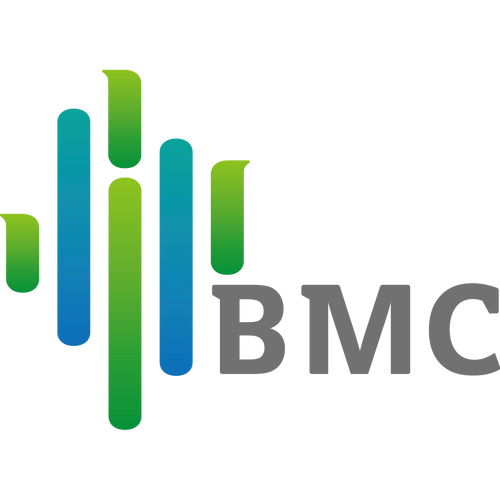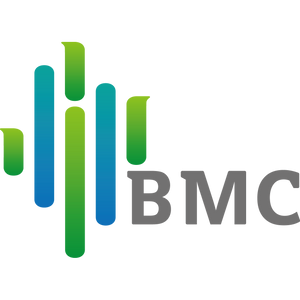COPD is a common and frequent disease of the respiratory system. Patients with chronic bronchitis suffer from irreversible damage to lung function due to long-term recurrent inflammation of the airways.
The causes of chronic bronchitis and COPD are the same. Chronic smoking, exposure to polluted air, or exposure to biofuels, all of these can cause chronic airway inflammation, which progresses continuously, with changes in the airway mucosa and damage to the alveoli that lead to structural changes in the airways. In addition to chronic bronchitis cough and sputum, patients also experience shortness of breath after activity and gradual worsening of symptoms.
The main causes are smoking, exposure to polluted air and long-term exposure to biofuels.

How To Find Out If You Have COPD Early?
The main symptom of COPD is shortness of breath, along with clinical manifestations of cough, sputum and chest tightness. Such as:
- Coughing easily
- Having phlegm in your throat at times
- Frequent tightness in the chest
- Easily feel short of breath when climbing hills or stairs
- Poor sleep
- Daily lack of energy
When you have the above symptoms at the same time, it has indicated the possible existence of COPD, and it is time to go to the hospital for pulmonary function test to make a clear diagnosis, and also for pulmonary function grading.
There are few obvious symptoms in the early stages of COPD, and you may think that it is just a normal ageing phenomenon of your body. Especially for people who have a history of smoking and long-term exposure to dust, they should pay special attention and have regular medical checkups, especially when coughing occurs.
As with hypertension and diabetes, COPD can only be controlled, not cured. Early detection and treatment are the only way to slow down the progression of this disease.
Do COPD Patients Need BiPAP Therapy?
The need for treatment with the BiPAP machine depends on the advice given by the doctor's diagnosis.
An important condition for effective BIPAP treatment is that the patient has no contraindication to NIV, including:
- Coma
- Refusal or inability to understand and follow the instructions of medical personnel
- Lack of spontaneous breathing
- Life-threatening drop in O2 levels in the blood
- Rapid breathing (more than 30 bpm)
- High likelihood of vomiting
- Heavy sputum production
- Life-threatening heart rhythm disturbances
- Facial injury resulting in inability to fit and use a mask for nose and mouth
- Acute otitis media or sinusitis
BiPAP treatment may improve life quality for patients with COPD
With COPD, the lungs are often inelastic, so breathing may become much more difficult and the lungs may be filled with mucus. Symptoms of COPD often get worse at night, which can keep a person from sleeping and increase daytime fatigue. Deep sleep is important to repair cellular tissue.
Therefore, the use of the BiPAP machine improves the symptoms of COPD patients. The BiPAP machine makes breathing easier, which helps prevent a decrease in oxygen levels during sleep, improves quality of life, reduces the frequency and severity of acute exacerbations, and improves patients' exercise tolerance and health status.

Compared to CPAP, BIPAP offers many advantages:
- Not only does it eliminate airway obstruction, but it increases the amount of air inhaled, which saturates the blood with oxygen and removes carbon dioxide
- Allows you to maintain the patient at a higher therapeutic pressure than with CPAP therapy.
- Reduces the burden on the respiratory muscles: it facilitates inhalation and does not cause difficulty during exhalation
- Provides the opportunity to select the best treatment plan based on the patient's needs and taking into account their diagnosis
- Allows the device to be synchronized with the patient's breathing with great precision
- Provides a more comfortable environment for night rest
How to choose BiPAP machine for COPD patients?
Compared with normal people, the respiratory function of COPD patients is usually weaker. It is recommended for COPD patients to choose a BiPAP machine with S/T mode.
ST machines are usually available in BiPAP S, BiPAP ST, CPAP and other modes.
What are CPAPmodel, BiPAP S, BiPAP T, and BiPAP ST?
CPAP mode: CPAP applies constant pressure during inspiration and expiration. When you exhale, the pressure acts as an "airway" to keep the airway open. This prevents the soft tissues of the upper airway from collapsing and causing sleep apnea.
CPAP is usually used in snoring hypoventilated patients, to continuously open the suspended airway and maintain adequate ventilation to reduce the occurrence of hypoxemia. CPAP mode is not suitable for COPD, because patients may lack spontaneous respiration during an attack of COPD, the CPAP mode cannot carry the spontaneous respiration of COPD when the patient is severely ill or in poor condition.
S mode (also known as spontaneous mode ), which means that a person controls machine work through his or her own spontaneous breathing ( when inhaling the machine provides inspiratory air pressure, when exhaling the machine provides expiratory air pressure), the working frequency of the machine is completely controlled by the patient's own breathing, this mode is mainly suitable for patients who have good breathing trigger ability. Therefore, the S-mode ventilator is not suitable for patients with severe conditions.
T mode (also known as passive mode or timed mode), is a mode where the machine controls the person's breathing based on set parameters, and the person can only passively follow the work of the machine. This mode is mainly suitable for patients with weak respiratory triggering ability. Therefore, this mode is more appropriate for patients with more severe conditions, especially those with poor autonomic breathing.
S/T mode is a combination of S mode and T mode, where the machine works in S mode when the patient's respiratory rate is higher than the set value, and in T mode when the patient's respiratory rate is lower than the set value.
The S/T mode combines the advantages of S and T modes, and the S/T mode BiPAP machine can set a target tidal volume according to the patient's condition, so that the ventilator works in S mode when the patient is breathing well, and the BiPAP machine continues to operate as set. When the patient is sicker or has poor spontaneous breathing, the ventilator will increase the pressure within the set pressure area, helping the patient to reach the preset tidal volume target. This avoids the danger, thus safeguarding the patient's ventilation needs and reducing the risk of carbon dioxide retention.
How to set the target tidal volume of BiPAP machine?
The target tidal volume setting of a CPAP machine is not fixed, it is something that needs to be varied from person to person. There is a formula for calculating tidal volume.
According to the standard formula, the target tidal volume can be set between 420ml and 630ml for a person of 170cm in height. It should be noted that the tidal volume of people with different body types may vary to a certain extent, so it is necessary to adjust the machine according to the patient's specific situation.
How many hours a day should a COPD patient be on a CPAP machine?
Patients in the early stage of COPD have mild symptoms and their breathing condition is still good during the day, then they can use the machine only at night, and it is recommended to maintain the machine time at 6-8 hours per day.
If the patient has asthma, shortness of breath and dyspnea during the day, it is recommended to use the CPAP machine during the day besides the normal use at night, which can help improve the quality of life and reduce acute attacks. Generally, it is recommended to use the machine half an hour after meals, but there is no rigid requirement for specific use time.
Of course, it is not the case that the longer you use the machine, the better the effect. COPD patients should follow medical advice and use it based on their actual situation.
Should COPD patients stick to BiPAP therapy in the summer?
In summer, lots of COPD patients stop using the BIPAP on their own because their cough is reduced and their dyspnea is relieved. Actually, this is wrong!
The course of COPD is divided into the stable phase and the acute exacerbation phase. In summer, many patients are in the stable stage, although cough and wheeze are relieved, the patient's lung function is incomplete and airflow is restricted, so it is crucial to insist on using BIPAP, which is no less important than conventional medication, and stopping on your own may cause the condition to worsen. It is recommended that COPD patients continue to adhere to BIPAP under the guidance of their MD, to reduce the risk of acute exacerbation of COPD.
COPD is a chronic disease that requires daily maintenance and treatment. Effective home therapy management will reduce acute attacks of COPD, slow down the disease process and help patients improve their quality of life.


